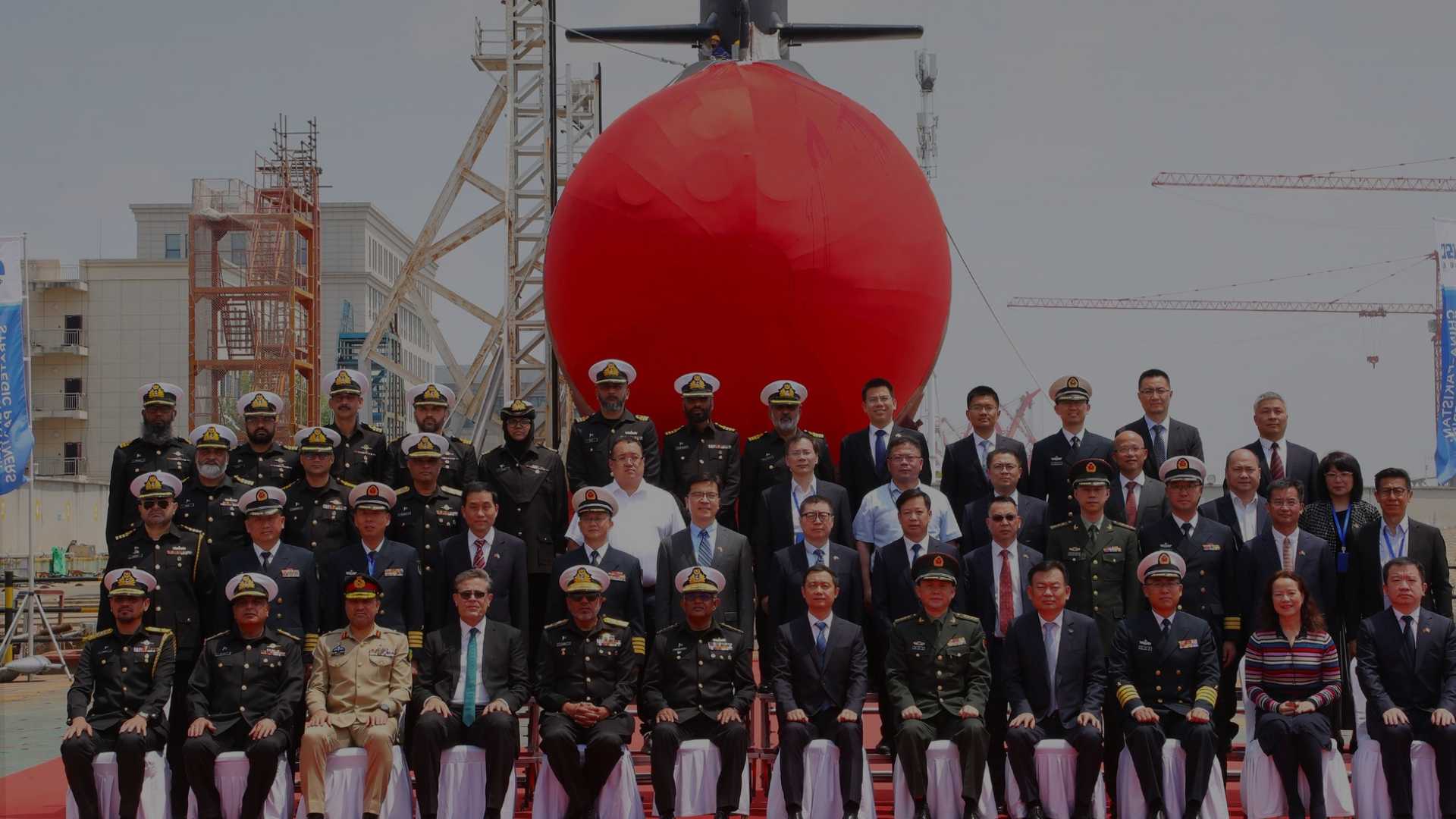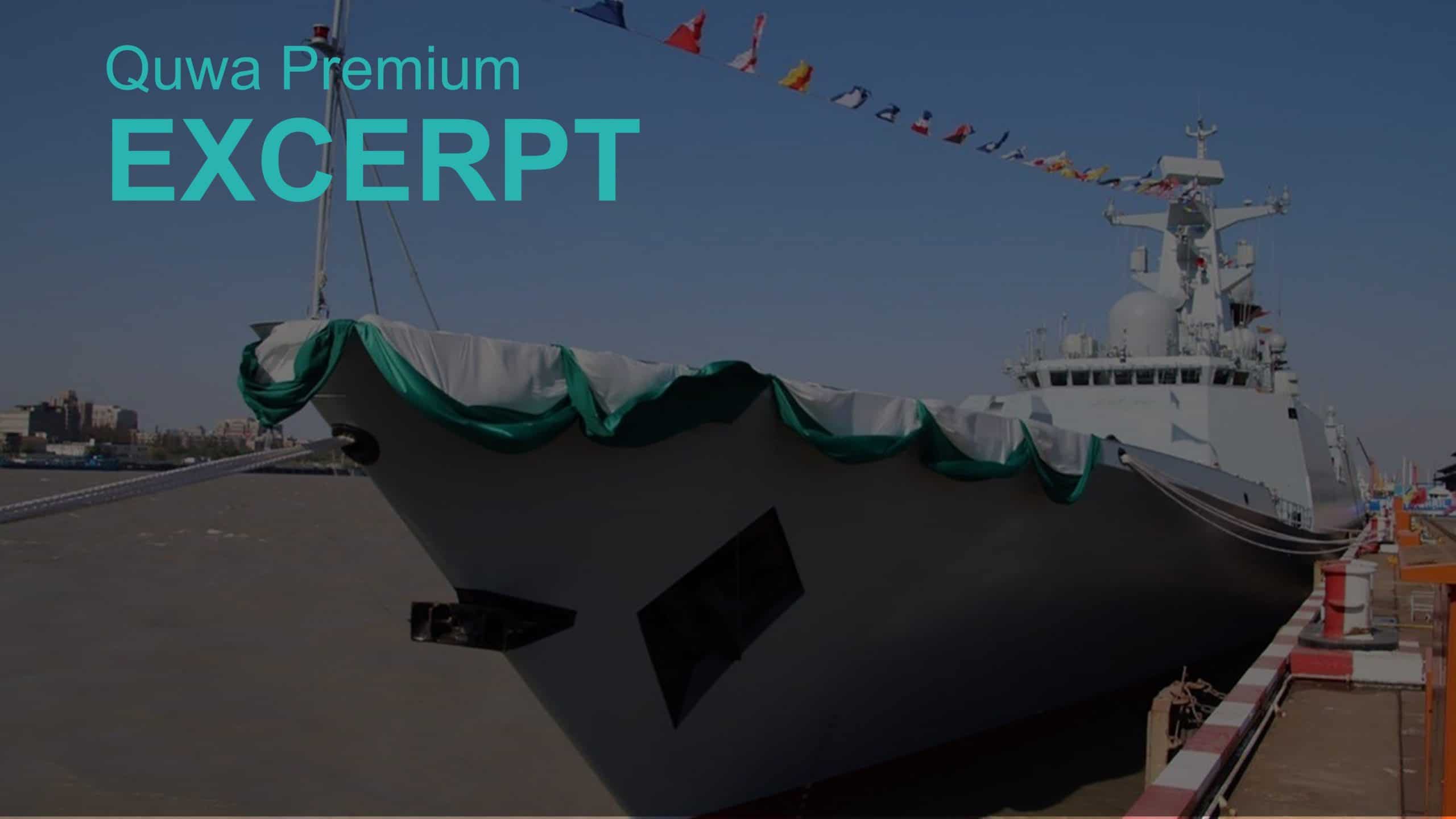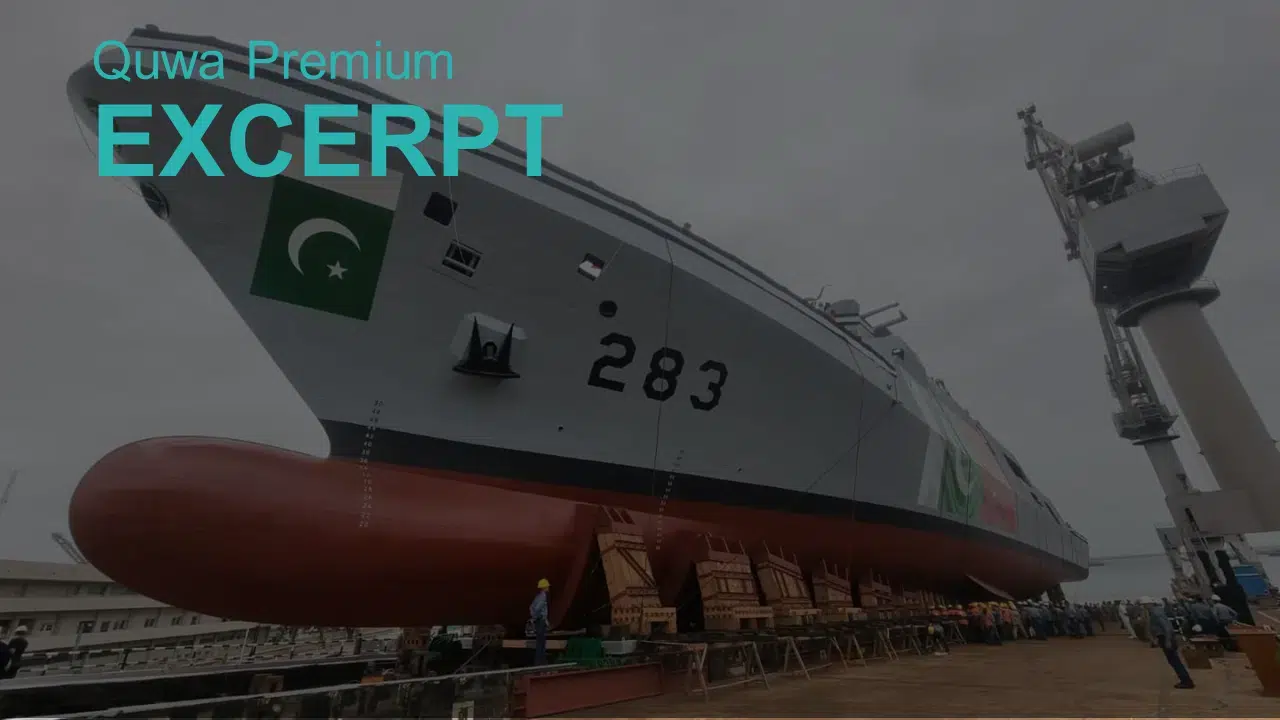333Views 0Comments

China Launches Pakistan’s First Hangor Submarine
Quwa Team
On 26 April, Wuchang Shipbuilding Industry Group Company Ltd launched the first of the Pakistan Navy’s (PN) forthcoming Hangor-class air-independent propulsion (AIP)-equipped submarines for sea trials from its facility, the Shuangliu Base in Wuhan. According to a press release by the PN’s Director General of Public Relations, the Chief of Naval Staff (CNS), Admiral Naveed Ashraf, said, “state-of-the-art weapons and sensors.”
PNS Hangor: Pakistan's New Submarine
No details were provided regarding when the PN will receive the PNS Hangor or the subsequent ships. Under the original timeline, the PN was supposed to receive its first four boats by 2023 and the remaining four by 2028. However, the program got delayed due to several problems, such as Germany withholding export licenses for the diesel powerplant and production delays.
Despite those challenges, the Hangor program is proceeding, and the PN is still poised to induct the eight boats around the late 2020s and early 2030s. Once these boats are inducted, Pakistan will have one of Asia’s largest sub-surface fleets, which may grow further should the PN procure shallow-water attack submarines (SWATS).
Pakistan ordered the Hangor-class submarines from China in 2015 in a multi-billion dollar contract comprising eight boats. Karachi Shipyards and Engineering Works (KSEW) will produce four boats under a transfer-of-technology agreement with China Shipbuilding & Offshore International Co. Ltd (CSOC). KSEW cut the steel for the first boat in 2021 and the second boat in 2022.
The Hangor-class is a variant of the S26 AIP-equipped submarine, which CSOC designed for the export market. The S26 uses a Stirling AIP system, enabling the submarine to operate underwater for extended periods, potentially up to several weeks, without snorkeling for oxygen. According to CSOC, the S26 can dive to a maximum depth of 300 m.
However, it seems that the PN requested several modifications to the S26 design. Compared to the S26, the Hangor has a heavier displacement weighing 2,800 tons (to the S26’s 2,550 tons) and a slightly shorter hull of 76 m (to the S26’s 77.7 m). It is not known what went into causing those design changes, but otherwise, the Hangor is similar to the S26 in most respects.
In terms of weapons, the Hangor-class will be equipped with six torpedo tubes (likely 533 mm) for heavyweight anti-submarine warfare (ASW) torpedoes and anti-ship cruising missiles (ASCM). In addition, the PN will likely configure the Hangor-class to deploy a variant of the Babur land-attack cruise missiles (LACM) for long-range strikes and, potentially, nuclear deterrence purposes.
Being a large submarine, the PN will likely use the Hangor-class to patrol Pakistan’s sea lanes and, in general, operate farther away from the shore. The forthcoming SWATS program will likely factor into the PN’s littoral-focused operations, including anti-access and area-denial (A2/AD).


